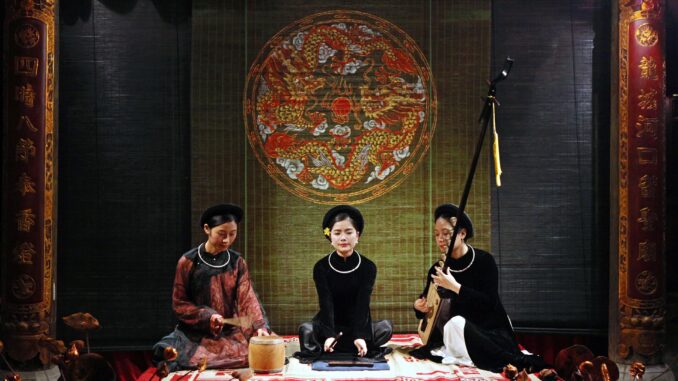
Ca Tru Singing also known as Vietnamese Ceremonial Singing, is one of the most unique Vietnamese genres of folk music in the Vietnamese treasury of traditional music. Its origin and history remain controversial today.
Ca Tru is usually performed by a group of artists, including a female singer (called “đào”), a zither, and musical instruments such as trumpets, drums, and drums. Ca Tru artists will perform songs with gentle, slow melodies and lyrics that often mention love, friendship, intimacy, and love for the homeland.
History
Ca Tru has an ancient origin, according to history dating back 700 years, according to folklore it dates back 1,000 years, but was most popular in the 15th century, at times it was considered a type of song in the royal court and was loved by princes, nobles, and writers. Ca Tru can be considered an art form that combines skillfully and at its peak between poetry and music…
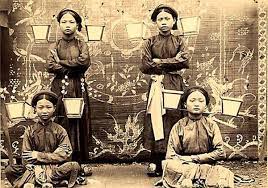
Ca Tru began in the Le Dynasty (15th century) after the bottom instrument was invented by Dinh Le (or Dinh Du according to some Church guilds). Ca Tru is a form of performing art that uses many literary forms such as verse, story, and recitation, but the most popular literary form is spoken singing.
Ca Tru also has many names. Depending on the locality and time, Ca Tru singing is also called A Dao singing, Co Dau singing, or Nha To sing… However, regardless of the name, the existence of Ca Tru is always associated with “Without peach fields, Ca Tru cannot be achieved. When talking about Ca Tru, we cannot help but talk about peach fields”.
Custom of Ca Tru Singing
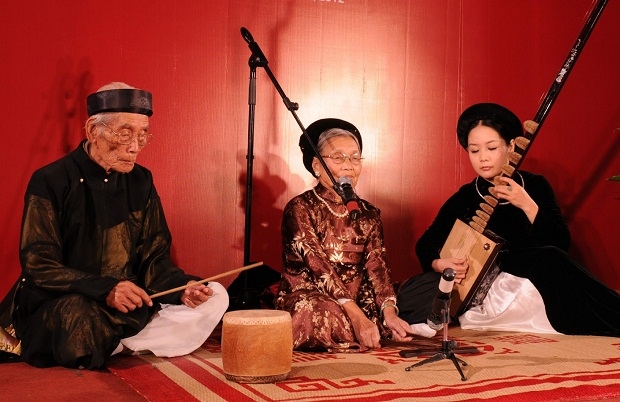
– Ca Tru songs often have complex melodies, with many notes and solo parts for the main singer.
– Ca Tru has a special way of performing, the main singer usually sits on a high chair, with the instrument player standing next to him and the drummer sitting opposite. Ca Tru is often performed in small spaces, creating closeness and connection between the singer and the audience.
– Ca Tru has many songs about love, life, and traditional Vietnamese culture. Songs are often composed based on poems or stories with profound and meaningful content. Ca Tru is also considered a form of religious art, often performed in temples, pagodas, and religious festivals.
– In particular, Ca Tru also has spiritual elements, often performed gently and elegantly, helping the audience find peace and escape the pressures of modern life.
Vocal Technique and Instrumental Accompaniment
The vocal technique of Ca Tru singing is complex and subtle. When singing, the singer should not open their mouth so widely and push air from the lungs but keep the air in the larynx while ensuring every word is pronounced clearly and correctly.
In addition to vocal technique, instrumental accompaniment also plays an important role, which includes co phach (set of clappers), Dan Day (three-stringed lute), and Trong Chau (praise drum).
Co Phach (set of clappers) consists of a piece of bamboo or wood (ban phach) and two wooden beaters (dui go). The set of clappers creates strong or weak, low or high sounds. The clappers are harmoniously mastered by performer’s arms, like dancing. Co Phach does not only maintain the rhythm of the song but is also an important indicator of singer’s proficiency. The singer had to learn how to play clappers fluently before learning to sing.
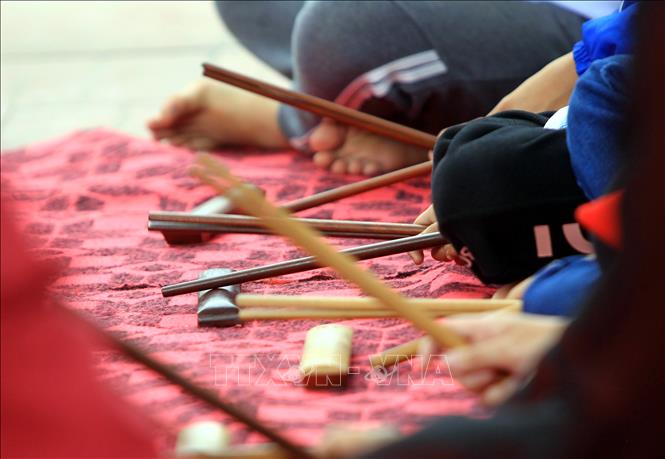
Dan Day (three-stringed lute) is only used in Vietnam. The resonator of the lute has a rectangular or trapezoidal shape. The frets on the instrument are high, so ornamentation such as glissandi and vibrato can be created by pressing and releasing the string against the fret. The timbre of the lute is muted and in the bass register.
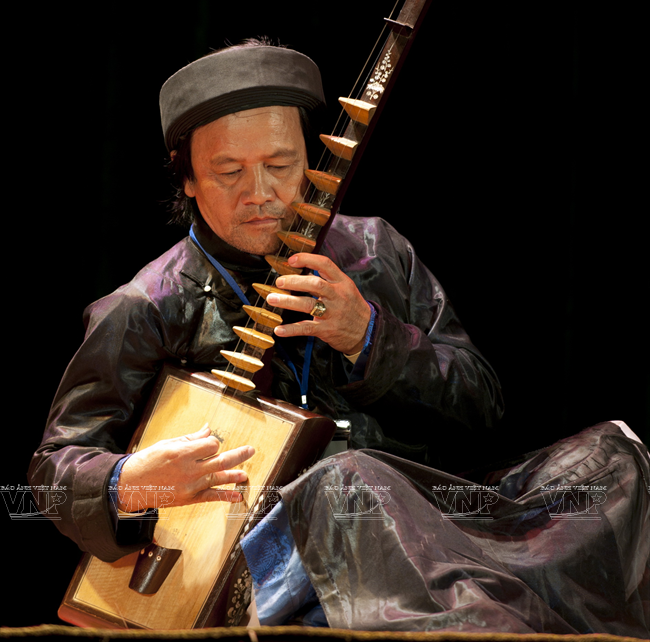
The size and form of Trong Chau (praise drum) in Ca Tru are similar to the drum in Cheo singing. The drumstick is called “roi chau” (“praise” rod). The praise drummers are known as officials (quan vien) who have high social positions, master Han Nom script, and are knowledgeable about poetry and Ca Tru music.
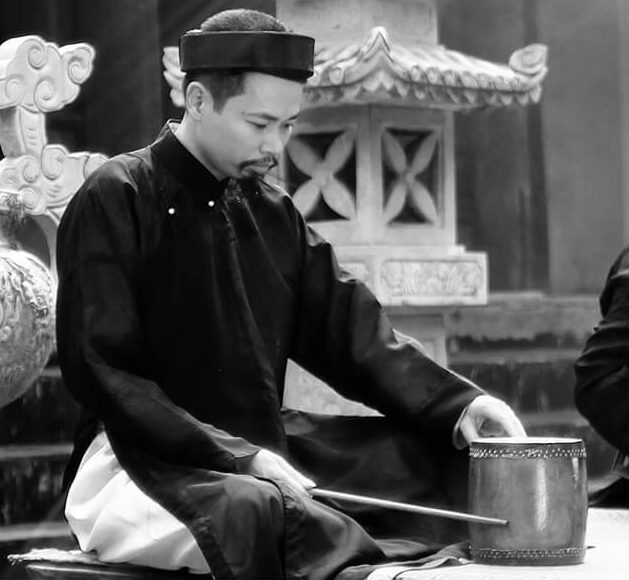
Dancing in Ca Tru Singing
Dancing is also an important element that contributes to the distinctiveness of Ca Tru. Dancing is often performed at the village’s communal house and at royal palaces. Here are some dances that are popular in Ca Tru.
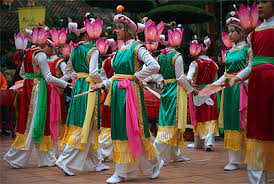
– “Bài Bông” dance originated in the 13th century in Tran Dynasty. It is performed at big events of the Ca Tru guild as a ritual ceremony held at the village’s communal house or royal palaces, longevity wishing ceremony, Ca Tru ancestor’s death anniversary, etc. There are at least 4 dancers in the dancing group and maybe 8,16 or 32 dancers, depending on the importance of the event.
– “Đại Thạch” (or dai thuc) dance is used in worship and competitive singing. The singers dance and sing to the lively rhythm of lutes and clappers. The lyrics of the songs are only a random combination of six-eight-word meter verses and do not necessarily express clear meaning. “Bỏ bộ” dance is performed in worship singing only. The singers both sing and dance while simulating work actions. The dance requires the performance of 6 – 8 female singers or more. Performing in clothes is not very formal. The lyrics of the songs describe working activities and praise sporting spirit.
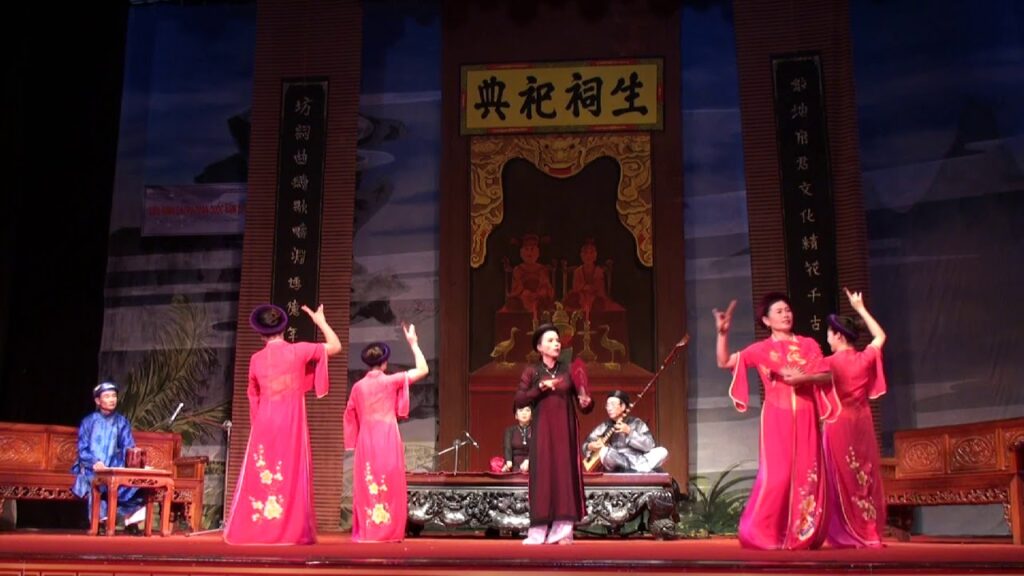
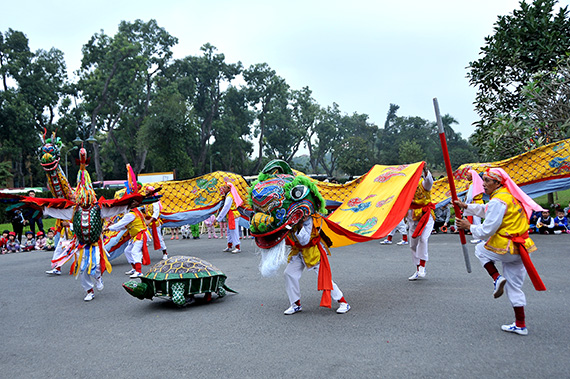
– “Tứ Linh” dance is performed in worship singing only, which refers to the dance of four supernatural creatures, describing four legendary animals named the dragon, kylin, tortoise, and phoenix. The singers offer incense and wine and sing and dance around the incense altar, while four instrumentalists play the part of four supernatural creatures dancing around the yard of the communal house.
Conclusion
In October 2009, Ca tru was recognized by UNESCO as an Intangible Heritage but in need of urgent protection, with 16 provinces and cities in Northern Vietnam. In particular, Hanoi currently owns the largest and richest Ca tru “capital” in the country, with about 14 active Ca tru clubs and groups. Some clubs have created great reputations at home and abroad, such as Thai Ha Parish, Hanoi Ca Tru Club, Lo Khe Ca Tru Club, Thang Long Ca Tru Club, etc.
Get an opportunity to visit Intangible World Cultural Heritage in Vietnam through Vietnam E-Visa!